 Oriel Garn – 174 on the 1841 Tithe Map.
Oriel Garn – 174 on the 1841 Tithe Map.
A house, garden and orchard containing 1 rood 38 perches, the owner is Albert Adams Williams.
A burial at St Peter’s says William Phillips aged 56 of Oriel Garn was buried in 1817, I can’t find any further mention until the 1841 census when John Lewis 45 and Elizabeth his wife are living at Oriel Garn.
In 1851 Elizabeth Hughes 56, a widow, formerly an innkeeper born in Llanover and her son John 28 are living at Oriel Garn, they remained there through to 1871 when John becomes the head of the family and his mother Elizabeth is 75, she died the following year and was buried at Mamhilad.
By 1881 the Rosser family had moved into Oriel Garn, from Upper House Goytrey, James was 46, Keturah his wife 38, and children James 18, Ann 16, Rachel 14, Richard 12, Sarah 8, Ruth 6, and Jenkin 3.
In 1885 Anne Rosser married Alfred Purnell at Mamhilad, and in 1896 Richard Rosser married Ellen Lusty in Cardiff, and Sarah married Francis Poulson.

The following is from the Free Press;
18th May 1883
Shooting Affray at Goytre On Tuesday evening last a serious shooting affray occurred at Goytre. It appeared that a man named Samuel Turner a blacksmith’s striker, living at Pontypool was coming home from Abergavenny fair when he called in at the house of his brother-in-law James Prosser (reported as Prosser but it is Rosser) a labourer living in Goytre.
Between seven and eight o’clock in the evening at altercation took place between the two and finally they had a fight. It is alleged that Turner became very violent and that Prosser in self-defence got his gun and shot him. Whether this really was the case it is as yet impossible to say, however in the heat of the quarrel Prosser sent for his gun, a double barrel one, which was already loaded with mixed shot and discharged one barrel into his brother-in-law’s left thigh inflicting a terrible wound about 11 inches in length.
Prosser occupied two houses which were attached and at the time of the quarrel the gun was in the premises adjoining those in which the scuffle took place. The fight must have been a very brutal one for Prosser did not come out of it until he had two ribs broken.
Information was conveyed to the police at Pontypool by means of the driver of the Abergavenny mail cart, with as little delay as possible and superintendent Whitfield accompanied by Dr Essex set out in a few minutes to the scene of the affray.
The injured man was attended to and Prosser taken into custody and brought to the police station at Pontypool. On Wednesday he was brought before J C Llywellin and remanded for 1 week. Dr Essex who is now attending Turner certified that under the most favourable circumstances it would be at least a month before he would be able to give evidence. The injured man who now lies in Pontypool union is progressing satisfactory.
22 June 1883
Shooting Affray at Goytre
James Rosser of Goytre was charged with feloniously wounding Samuel Turner by shooting him with a gun.
Mr. T. Watkins appeared for the defendant. Prosecutor said he was a labourer living Trosnant Pontypool; he went to the prisoner’s home on 15th May. After going into the house his sister (prisoner’s wife) asked him to sit down. They had some words and the prisoner “took it up”.
Prisoner called him a “—-“ scamp and he called him a liar.
His sister got up and struck at him. Witness got up off the chair to prevent her striking the blow and the prisoner then interfered and hit him down a good bit.
Witness tried to keep him off his feet he got up and they all ran away for fear he should murder them he supposed, prisoners daughter then said “fetch the gun father and shoot him”. The daughter brought the gun to witness who shot witness “smack” the charge striking him in the leg.
Witness did not stand on his feet and the postman came to his assistance. Dr Essex saw him afterwards, he was in awful pain.
In answer to Mr. Watkins witness said he had been to a fair that day, he liked to go to fairs.
He did know that the row had commenced about Robert Davies or that he called him bad names. He said that he wasn’t much good. The prisoner came into the house about 2 minutes after he got there. He was then ‘having words’ with his sister. George Young was also there. But he did not attempt to make peace between him and his sister. They kept on quarrelling. He did not put up his fists. Prisoner got up and “scienced” before him, and struck him. He did not “science” before the prisoner, but tried to make his sister sit down. He did not call her any bad names. Prisoner struck him down but when on the ground wit was not very violent though he tried to keep the prisoner off. He pushed him away with his feet. He did not know how prisoner ribs were broken. He was in a bad temper on the ground but did not threat to murder anybody. He knew better than to do that. He did not throw the knife box at prisoner. But ‘shot’ something at him. He did not break any chairs. He did not remember when in his brothers’ house in Trosnant a week before threatening to do worse than anything he had ever done before.
He had been in this court for assaults many times before, worse luck but had never been convicted of assault in Abergavenny. Perhaps he had been convicted in this court 6 different times. He had had 14 days at Pontypridd for begging but that was no harm. He had ‘done’ a month at Liverpool but that was nothing at all.
George Young whose depositions taken at the previous hearing, were read, was next examined. In reply to Mr. Watkins wit said he felt a lump on Rosser’s ribs immediately after the assault. He had been in the house about half an hour before prosecutor, who was followed in about 10 minutes by the prisoner. During the interval he was quarrelling with his sister and was quarrelling with her when the prisoner came in. Prisoner clenched his fists and witness expected he would have struck his sister. Prisoner said his wife then held him down on the ground. Prior to that wit was making most use of violent threats and wit persuaded them to let him get up to see what he would do.
Dr J R Essex said that on the 15th May he was called to Goytre arriving there about 10 o’c. he saw prosecutor at prisoners house. He examined him + finding a large lacerated wound on upper part of thigh. The wound was about 5” ac extending about 11” down towards the knee. The edge of the wound was very much riddled, it was a gunshot wound. He also ex prisoner who was suffering from severe injury to the ribs, 2 of which were broken. He had seen the prosecutor since at the workhouse. With ref to prisoners injuries he should say they were caused by a blow given with a good deal of force. One rib had been forced underneath the other; it was a most unusual injury, a kick would have caused it. The prosecutor was doing well and was now out of danger.
By Mr. Watkins, it must have been a violent blow to have caused injury to the ribs. Prisoner said he had shot Turner + that he had waited for his opportunity so as not to shoot him in the body. He also said that of he did not shoot him they would all have been murdered.
PC Price proved apprehended the prisoner who said “this is a bad job here” what are you going to do with me? I can’t walk, he had broken some of my ribs or something” in and to the charge prisoner said if he hadn’t shot him Turner would have murdered the lot of them.
Wit: took possession of the gun – a double barrel one – one barrel of which had recently been discharged. Witness produced the gun, prosecutors’ trousers + the charge found in the other barrel.
The charge was handed to the magistrates who were of the opinion that it was a very small one. Prisoner was committed to take his trial at the ensuing assizes bail being fixed at – himself £100 + 3 surety of £50 each.
On the 2nd April 1897 James Rosser was summoned for non-payment of 14s 11d poor rates and again on the 14th May for not having a dog license and was fined 7s 6d.
A court case in the Free Press on the 16th November 1900 says Mrs Rosser’s trap was damaged by Henry Knipe – she won £3 compensation.
More marriages, Jenkin married Elizabeth Morris in 1902 and Clara married William Crump of Pengroesoped Farm the same year.
In March 1900 an advert in the Free Press offers 5 twelve week old pigs, one 5 month old, good growers; apply Rosser Ty Cooke Goytre.
 By 1915 Richard Jones is living at the now named Oviel Garn and in 1918 Albert Adams Williams sold Oviel Garn to Thomas Jenkins of New Barn for £180.
By 1915 Richard Jones is living at the now named Oviel Garn and in 1918 Albert Adams Williams sold Oviel Garn to Thomas Jenkins of New Barn for £180.
From 1918 to 1924 George and Margaret Davies resided there followed by William Parsons to 1926; Bertie Paginton, Daisy and Ethel from 1926 to 1930.
 Nyth Catty was Goytrey poorhouse, so a little more is known about it’s history. It was replaced by Penwern Cottages between 1864 and 1871.
Nyth Catty was Goytrey poorhouse, so a little more is known about it’s history. It was replaced by Penwern Cottages between 1864 and 1871.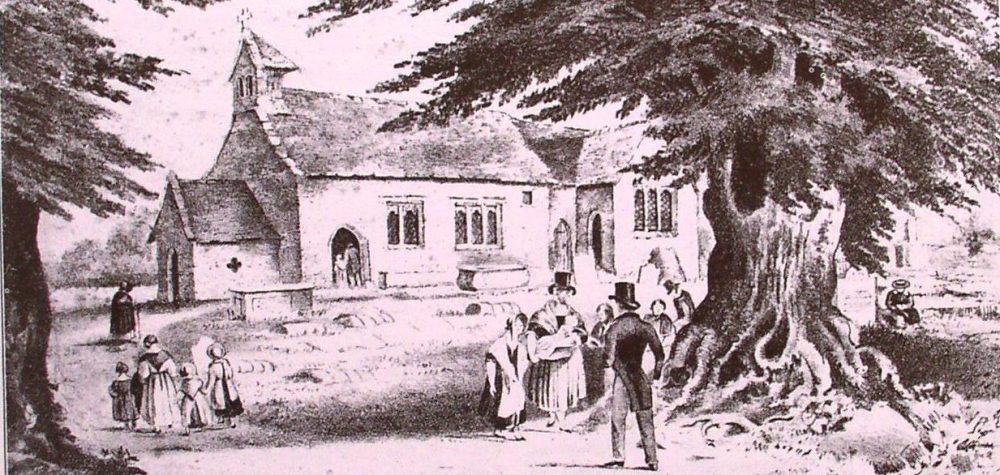

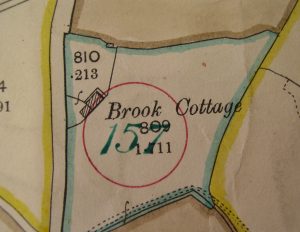 The 1822 Court Leet says Thomas Lewis died seized of a lease, the 1825 land tax says William Lewis is the occupier of the Lords land previously held by Thomas Lewis, William died and was buried at St Peter’s on the 4th September 1827, the lease is then transferred to John Lewis.
The 1822 Court Leet says Thomas Lewis died seized of a lease, the 1825 land tax says William Lewis is the occupier of the Lords land previously held by Thomas Lewis, William died and was buried at St Peter’s on the 4th September 1827, the lease is then transferred to John Lewis.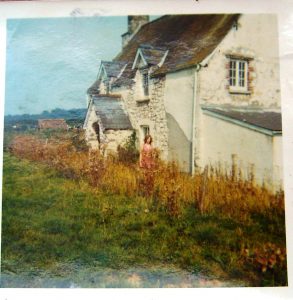 Llanover purchased many properties in the parish of Goytre the boundary changed and Abergwellan became part of Llanover Parish
Llanover purchased many properties in the parish of Goytre the boundary changed and Abergwellan became part of Llanover Parish
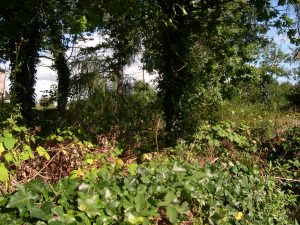
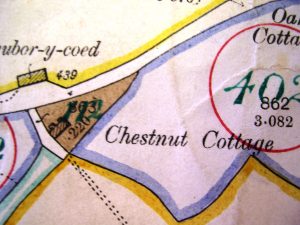 The gross value of Chestnut Cottage was £4 10s and the rateable value was £3 10s.
The gross value of Chestnut Cottage was £4 10s and the rateable value was £3 10s.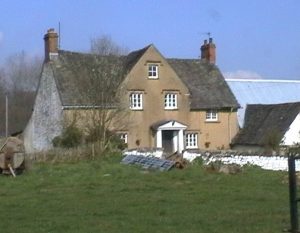
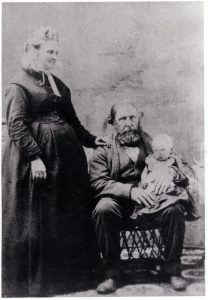
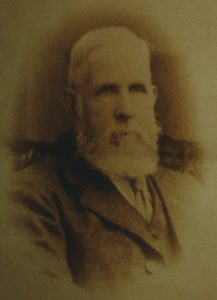
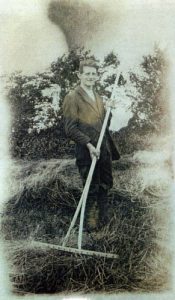


 By 1915 Richard Jones is living at the now named Oviel Garn and in 1918 Albert Adams Williams sold Oviel Garn to Thomas Jenkins of
By 1915 Richard Jones is living at the now named Oviel Garn and in 1918 Albert Adams Williams sold Oviel Garn to Thomas Jenkins of  The owner in 1812 was Ann Pritchard of
The owner in 1812 was Ann Pritchard of  The poor rate of 1914 says the owner is Prosser. This lovely photo of ‘Rees the Police’ was sent to me by Nigel Purches, I believe him to be Nigel’s great-great-grandfather who lived at Common Bach. The second photo is also of him and described by Nigel as ‘Old Rees.’ He was born in 1866, the son of Thomas and Ann Prosser, Upper House Goytrey.
The poor rate of 1914 says the owner is Prosser. This lovely photo of ‘Rees the Police’ was sent to me by Nigel Purches, I believe him to be Nigel’s great-great-grandfather who lived at Common Bach. The second photo is also of him and described by Nigel as ‘Old Rees.’ He was born in 1866, the son of Thomas and Ann Prosser, Upper House Goytrey. Pontymoel Corner Again – Friday 7th April 1936
Pontymoel Corner Again – Friday 7th April 1936

 I remember Twyn Shinney, (there are several spellings of T.S.) a cottage tucked into the hillside on star pitch. The cottage was demolished and sadly there are no photos (I asked Carol if she had one.)
I remember Twyn Shinney, (there are several spellings of T.S.) a cottage tucked into the hillside on star pitch. The cottage was demolished and sadly there are no photos (I asked Carol if she had one.)